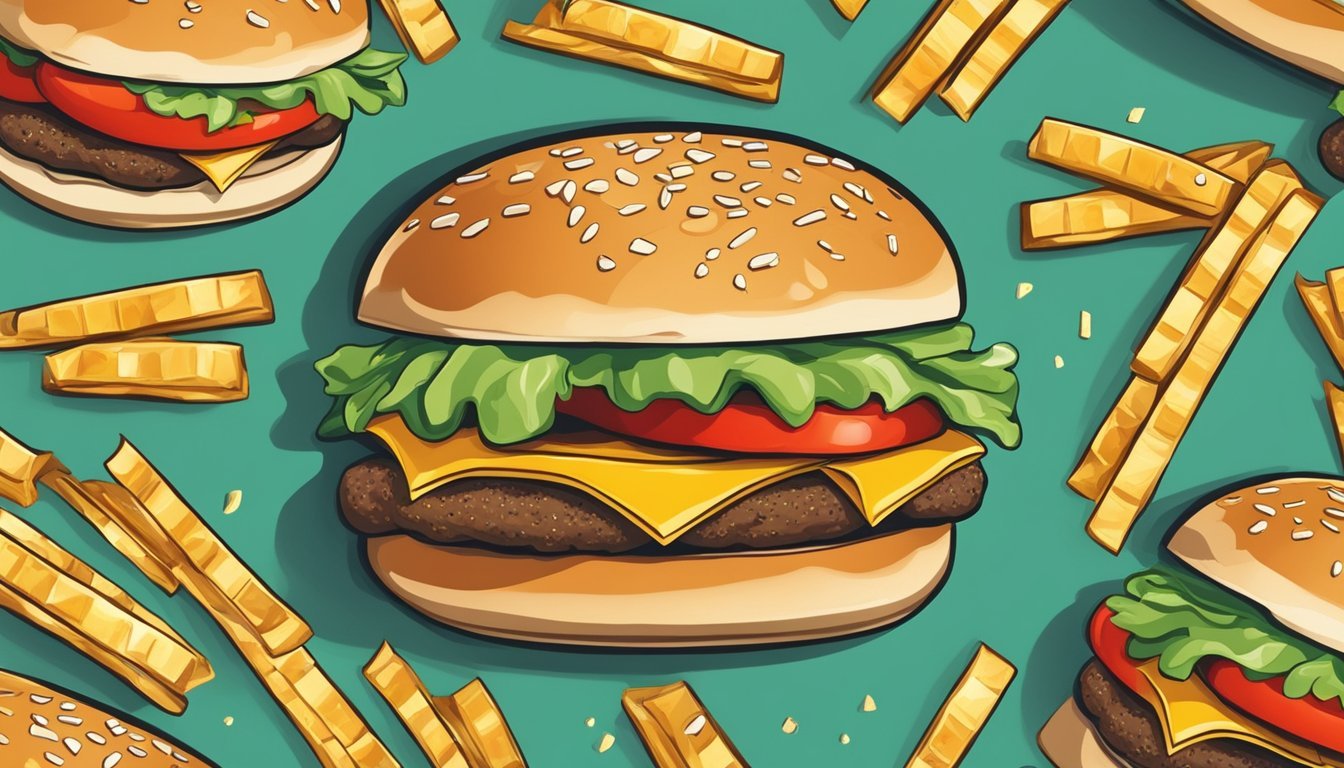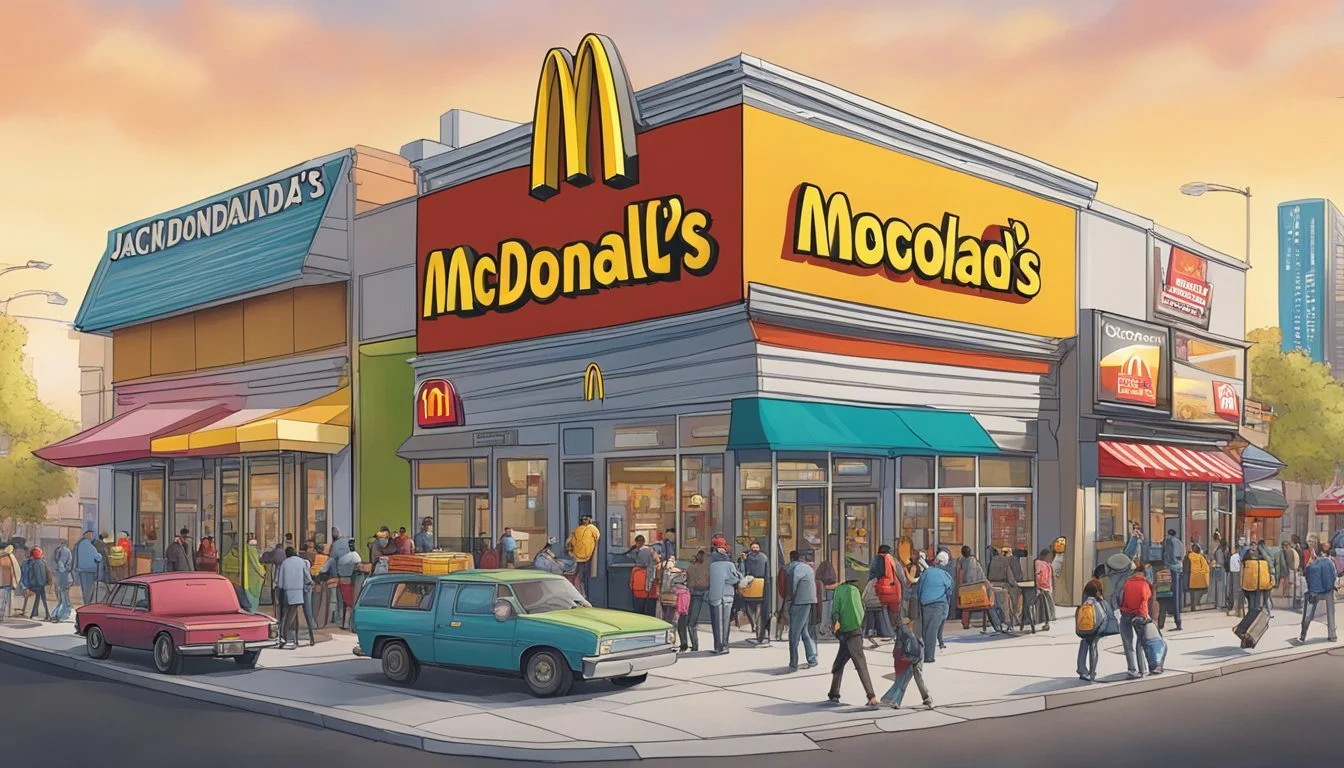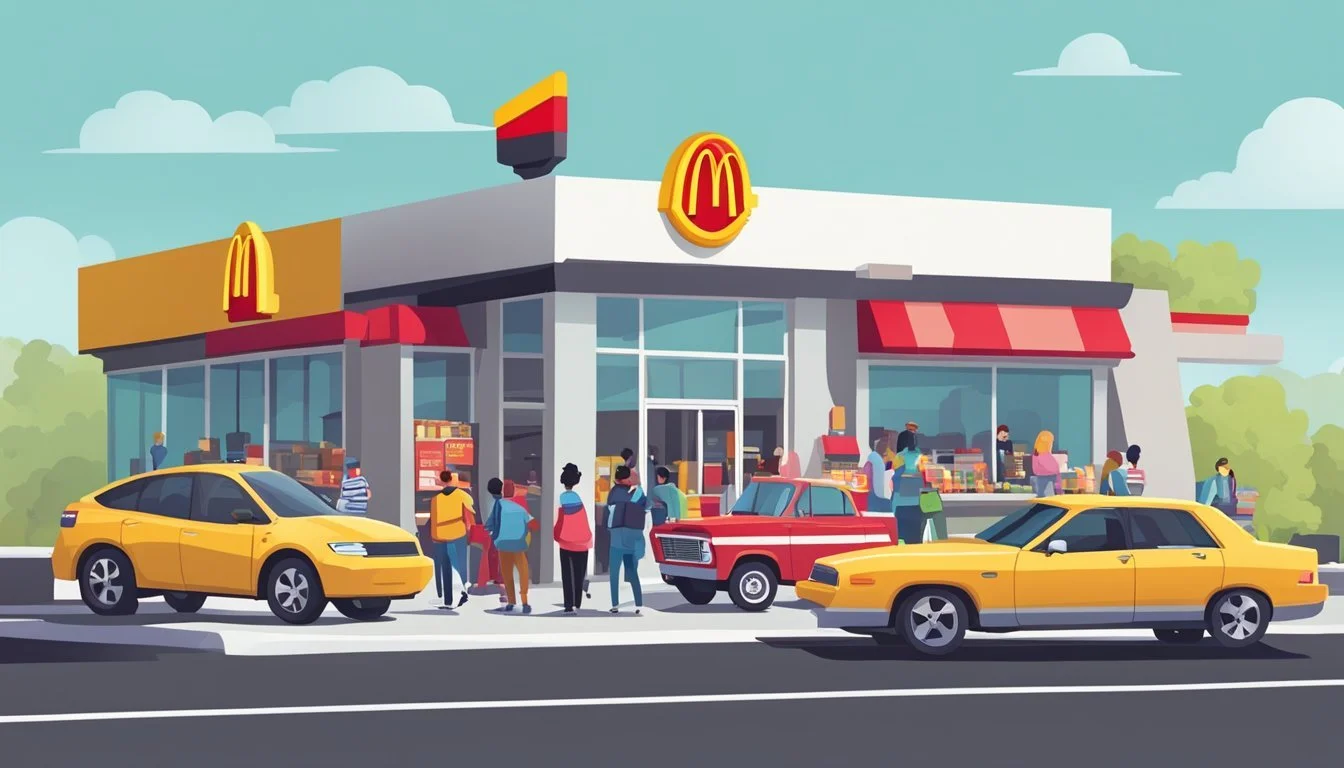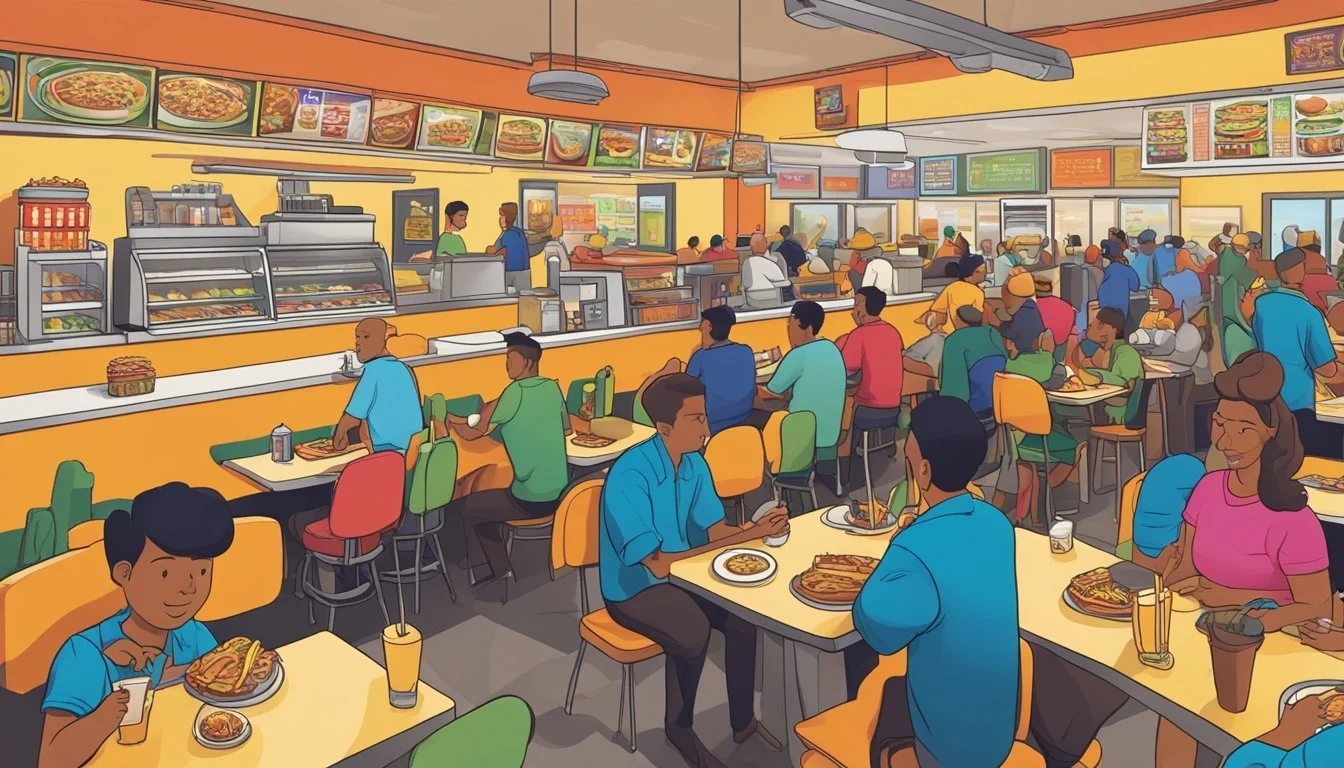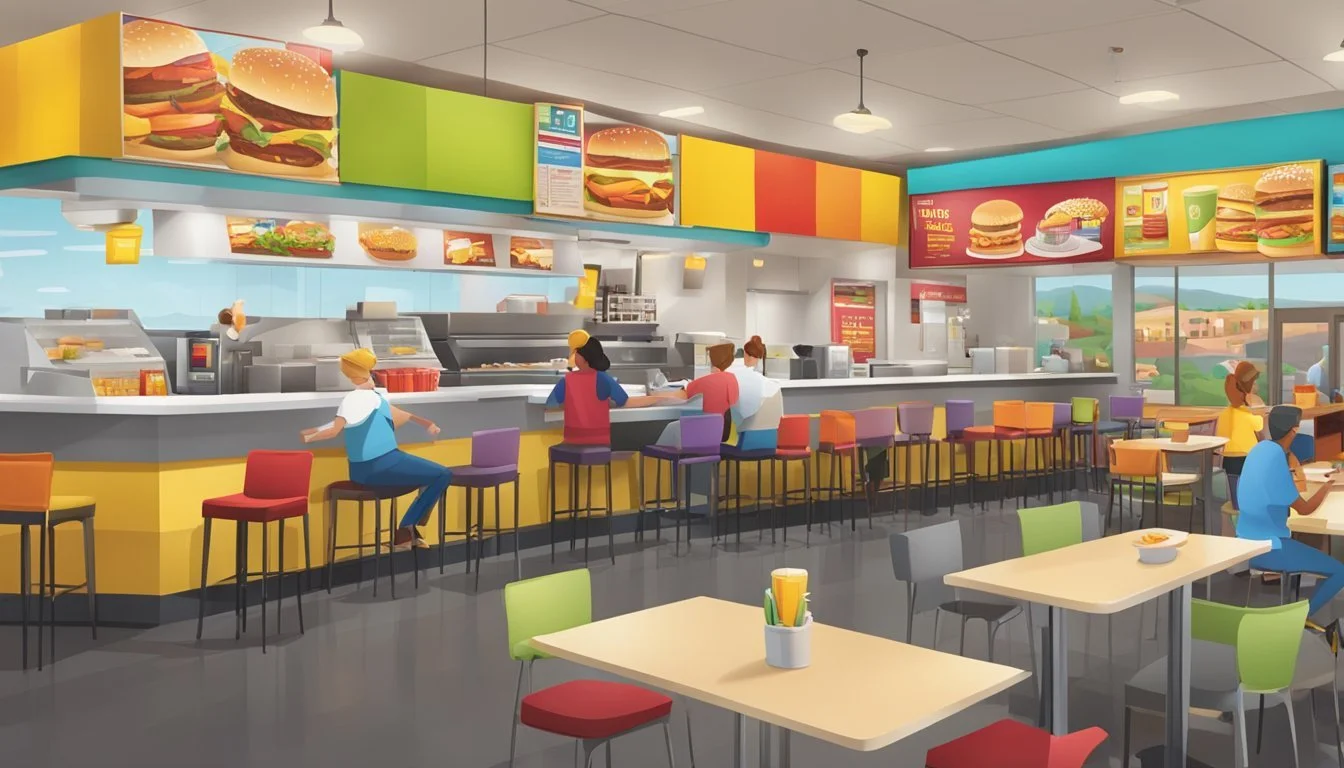McDonald's vs Jack in the Box
A Comparative Guide to Burger Quality and Value
Deciding between McDonald's and Jack in the Box for a quick burger fix is a common dilemma for fast food aficionados. While both chains have a vast presence across the country, they offer distinctly different dining experiences and menu options. McDonald's, with its global recognition, brings to the table its classic Big Mac, a variety of breakfast items, and a generally lower price point for beverages like Coke, which is advertised at around $2.49. On the other hand, Jack in the Box is known for its wider variety of menu choices, including tacos, but it tends to have slightly higher prices for comparable items such as drinks.
When assessing which is better, consumers often weigh factors such as price, menu diversity, and the quality of the food. For instance, Jack in the Box offers the freedom to customize burgers with various toppings, and many of their items are aimed at those seeking more than just a traditional burger. McDonald's, while perhaps more limited in burger customization, has honed a reputation for consistency and speed of service, ensuring a predictable experience at any location.
Avid fast food customers also consider the overall dining experience, from the ambiance of the eateries to the customer service provided. This comparison is further enriched by diner reviews and rankings which put these chains head to head on various aspects such as taste, value for money, and the overall satisfaction derived from the dining experience. With the information provided and the fierce loyalty customers exhibit towards their preferred chain, choosing between McDonald's and Jack in the Box is often a personal preference informed by these key factors.
Historical Overview
McDonald's, a household name in fast food, began as a barbecue restaurant in 1940, established by Richard and Maurice McDonald in San Bernardino, California. They shifted to a predominantly hamburger-based menu in 1948, which marked the inception of the "Speedee Service System," a prototype of the modern fast-food model. Featuring a 15-cent hamburger, McDonald's emphasized efficiency, which laid the groundwork for its global success.
Jack in the Box emerged later in 1951, founded by Robert O. Peterson in San Diego, California. The restaurant differentiated itself by targeting a slightly different market, including a broader selection of items, and is noted for introducing a drive-thru with intercom ordering.
McDonald’s
Founded: 1940
Original Location: San Bernardino, CA
Noted For: Introduction of the "Speedee Service System" and its efficiency
Jack in the Box
Founded: 1951
Original Location: San Diego, CA
Noted For: 24-hour service and diverse menu options
Both chains have distinctly shaped the American fast-food landscape, with McDonald's focusing on uniformity and franchising, thus rapidly spreading across the globe. Jack in the Box, while also embracing franchising, maintained a strong regional identity, particularly in the western United States.
Their historical impact on the fast food industry is significant. While McDonald's streamlined the concept of the quick-service hamburger joint, leading to its ubiquity, Jack in the Box adapted by offering diverse options, setting the stage for the contemporary fast food scene where menus cater to a wide range of tastes.
Menu Variety and Signature Offerings
When comparing McDonald's and Jack in the Box, it's essential to focus on the variety offered in their menus and the signature items for which they are known. Each restaurant prides itself on its unique burger offerings and selection of sides, salads, and specialty items.
Burgers and Main Attractions
McDonald's boasts worldwide recognition for its Big Mac, a classic offering that includes two beef patties, special sauce, lettuce, cheese, pickles, and onions on a sesame seed bun. Alongside the Big Mac, other favorites include the Quarter Pounder with Cheese and the budget-friendly options like the McDouble and Double Cheeseburger.
On the other hand, Jack in the Box offers a variety of burgers including the Jumbo Jack, which presents a beef patty topped with lettuce, tomato, pickles, onions, and mayonnaise on a buttery bun. The chain also offers other distinctive burger variations, allowing for a broader range of toppings and flavors.
Sides and Salads
Both chains provide a selection of sides with McDonald's featuring its world-famous fries, which are often praised for their perfect blend of crispiness and seasoning. Additionally, McDonald's offers a range of salads catering to those seeking lighter fare.
Contrastingly, Jack in the Box offers a diverse menu that includes not just typical fries but also options like curly fries and egg rolls, making for a more eclectic range of side dishes. They also serve salads, providing alternative choices for guests preferring greens over fried items.
Desserts and Unique Items
McDonald's is renowned for its desserts, such as their iconic apple pie and the variety of milkshakes, which compete closely with offerings from chains like Dairy Queen and Shake Shack. They're also known to occasionally offer items on a secret menu, adding an element of surprise to their dessert options.
Jack in the Box is not to be outdone in terms of unique offerings; it too provides a slew of creative desserts, of which their milkshakes are a substantial component. The chain's dessert section, although not as famous as its burger offerings, holds its own with a range of indulgent treats.
Nutritional Value and Health Considerations
When comparing McDonald's and Jack in the Box, it is essential to consider the nutritional content of their offerings, especially the calorie counts and protein content of their menu items, as well as the availability of healthier options and dietary accommodations to cater to a wide range of dietary needs.
Calorie Counts and Protein Content
McDonald's and Jack in the Box both offer a range of burgers, with calorie counts that can vary widely. A basic hamburger from McDonald’s typically contains 250 calories and 12 grams of protein. On the other hand, Jack in the Box’s Jr. Jumbo Jack is said to provide 420 calories, 14 grams of protein, and 2 grams of dietary fiber.
McDonald's Hamburger
Calories: 250
Protein: 12g
Jack in the Box Jr. Jumbo Jack
Calories: 420
Protein: 14g
Dietary Fiber: 2g
It is important for consumers to consider personal health goals when choosing meals from either establishment.
Healthier Options and Dietary Accommodations
Both chains have taken steps to accommodate a variety of dietary needs. McDonald's offers a Nutrition Calculator tool, allowing customers to tailor their orders to meet specific dietary requirements. They serve a selection of salads that can be considered as lower-calorie, fresher alternatives to traditional fast-food fare.
Jack in the Box, while typically not as known for salads, provides options that could fit into a keto-friendly diet, due to the ability to customize orders and potentially choose items that are lower in carbs.
Diners seeking to maintain a balanced diet can find options at both chains that cater to health and nutritional value, although these choices are not the primary focus of either menu.
Price Points and Value for Money
When comparing the price points of McDonald's and Jack in the Box, customers often look for the balance between cost and the quality of food they receive. Value for money is a key consideration, particularly for fast-food enthusiasts aiming to maximize their dining experience without overspending.
McDonald's is known for its value menu, with various items priced affordably, offering a decent meal for those on a budget. Despite slight regional variations, here is a snapshot of McDonald's pricing for common items:
Cheeseburger: $1.00
Small Fries: $1.39
Small Soft Drink: $1.00
In contrast, Jack in the Box provides a similar range of products, often with a slightly higher price tag. For example, a comparison of beverage prices reveals:
Jack in the Box
Iced Coffee: $3.59
Small Coke: $3.29
McDonald's
Iced Coffee: $3.49
Small Coke: $2.49
Yet, Jack in the Box is said to offer competitive pricing on some items. Patrons with a focus on spending less might find select menu options that align with their budget constraints at Jack in the Box.
It's important to recognize that menu prices are subject to change and promotions at either establishment may offer short-term value. Consumers also weigh the menu variety, taste, and portion sizes when assessing the overall value received for the money spent.
In conclusion, while McDonald's generally offers a more familiar value menu with lower-priced selections, Jack in the Box occasionally positions itself as the more economical choice depending on select items and regional pricing strategies.
Customer Experience
In the competition between McDonald's and Jack in the Box, the customer experience is a pivotal factor. Service speed, atmosphere, and cleanliness play major roles in shaping the perceptions of each brand.
Service and Speed
Both McDonald's and Jack in the Box streamline service across their numerous locations. However, one study's customer satisfaction rating revealed that Jack in the Box leads with a score of 1.33, which may suggest quicker service. Customers typically expect prompt food preparation and efficient checkout procedures at both establishments, which these burger joints strive to maintain.
Dining Atmosphere and Cleanliness
When it comes to the dining experience, the cleanliness of the premises is crucial. Both businesses endeavor to provide a clean dining environment, but individual franchise maintenance can vary. Each brand promotes its own unique dining atmosphere: McDonald's with a universal, family-friendly theme, and Jack in the Box with a more adventurous, varied late-night offering. Regardless, consistent cleanliness is a fundamental expectation from customers visiting both fast-food chains.
Marketing and Brand Reputation
When examining McDonald's and Jack in the Box, it becomes evident that their marketing strategies and brand reputations play pivotal roles in their popularity.
McDonald's sustains its reputation through aggressive marketing and global presence. It's recognized for its golden arches and the character Ronald McDonald, reinforcing its image as a family-friendly establishment. They maintain their brand reputation by emphasizing consistency and convenience across their outlets.
Global familiarity: Instantly recognizable branding
Marketing campaigns: Extensive use of multimedia advertising
Slogans: Memorable taglines like "I'm lovin' it"
In contrast, Jack in the Box employs a more localized approach to marketing, appealing to its patron's sense of individuality and humor. Their reputation is often associated with bold choices and variety in their menu offerings.
Brand persona: Quirky and humorous advertising
Audience targeting: Focus on differentiation and unique value
Employee sentiments from Comparably suggest that McDonald's may have a slightly more favorable culture, scoring 62/100 compared to Jack in the Box's 54/100, which potentially impacts their public reputation.
McDonald's has established a more universally appealing brand, known practically in every corner of the world. On the flip side, Jack in the Box has carved a distinct niche in the market, where its reputation for creativity in its offerings stands out.
McDonald's
Marketing Approach: Ubiquitous and consistent
Consumer Perception: Family-friendly, convenient
Jack in the Box
Marketing Approach: Localized and humorous
Consumer Perception: Bold, original
While both brands have achieved popularity, the reputations they foster through marketing strategies shape consumer preferences differently, and their public images reflect these strategic differences.
Global Footprint and Locations
When assessing the global presence of these two fast food giants, McDonald's clearly has a more extensive footprint than Jack in the Box. As of the latest data, McDonald's boasts roughly 40,000 locations worldwide. They've announced a strategic plan to increase this number by 10,000. Their expansion is global, catering to diverse markets and customer bases.
In contrast, Jack in the Box operates over 2,100 locations, primarily within the United States. Although smaller in scale, this presents significant room for growth, especially within untapped domestic markets.
Yum Brands, which operates several other fast food franchises, has been opening new locations at a remarkable pace, signaling the industry's overall growth and aggressive expansion strategies.
Number of Locations
McDonald's: ~40,000
Jack in the Box: ~2,100
Yum Brands: 60,000+ (projection)
McDonald's and Yum Brands are focusing on increasing their global presence at a rapid rate, emphasizing their dominance in the industry. Meanwhile, Jack in the Box could potentially leverage their smaller footprint for nimble growth strategies in the future.
Comparative Analysis
In the fast-food arena, McDonald's and Jack in the Box stand as notable competitors. This comparative analysis reviews their offerings in key areas, considering aspects such as taste, customer loyalty, and innovative practices.
Taste Tests and Quality of Ingredients
Jack in the Box's menu is known for its variety and includes items that tend to be more experimental in taste. When it comes to burger quality, McDonald's is consistent with its classic flavors, focusing on simplicity and familiarity. The latter's signature items like the Big Mac have stood the test of time, suggesting high-quality ingredients and reliable taste profiles.
Customer Loyalty and Satisfaction
McDonald's boasts a larger global presence and a strong brand identity, which has cultivated a significant customer base. Its loyalty program and customer engagement strategies have also contributed to its high satisfaction rates. On the other hand, Jack in the Box maintains its popularity with a strong regional following, specifically in the western United States, and appeals to customers with its secret menu and late-night offerings.
Innovation and Adaptability
Regarding innovation, Jack in the Box has shown a willingness to adapt and introduce bold menu items, aiming to cater to niche tastes and late-night cravings. Conversely, McDonald's demonstrates adaptability through its business model by deploying strategic marketing campaigns and regularly updating its menu with various limited-time offers. Both chains are competitive in this space, but McDonald's global scale allows it to implement changes more broadly and effectively.
Final Verdict
When determining which burger joint is superior between McDonald's and Jack in the Box, consumers have various factors to consider. Price differences indicate that Jack in the Box generally offers lower-cost items than McDonald's. However, this is not uniformly the case with all products, as some beverages and burgers at Jack in the Box are noted to be more expensive, based on the small Coke and burger price comparison.
McDonald's
Drinks: Cheaper drinks
Overall Items: Lower-cost items overall
Jack in the Box
Basic Items: More expensive basic items
Selections: Some more expensive selections
Nutritional content and menu variety play significant roles but are not detailed in the provided information. Service, restaurant ambiance, and customer loyalty also contribute to the evaluation but are beyond the scope of this analysis.
Considering prices alone, Jack in the Box may be more appealing to budget-conscious customers for its cheapest offerings. McDonald's, on the other hand, is positioned as a more favorable choice for specific items like beverages. Without assessing other critical factors such as food quality, customer service, and nutritional value, a definitive judgment cannot be pronounced.
In summary, the decision rests with consumers, prioritizing attributes that matter most to them—be it cost, menu diversity, taste, or other personal preferences. Neither establishment holds a decisive edge over the other across all categories; thus, an outright winner cannot be named in this context.

